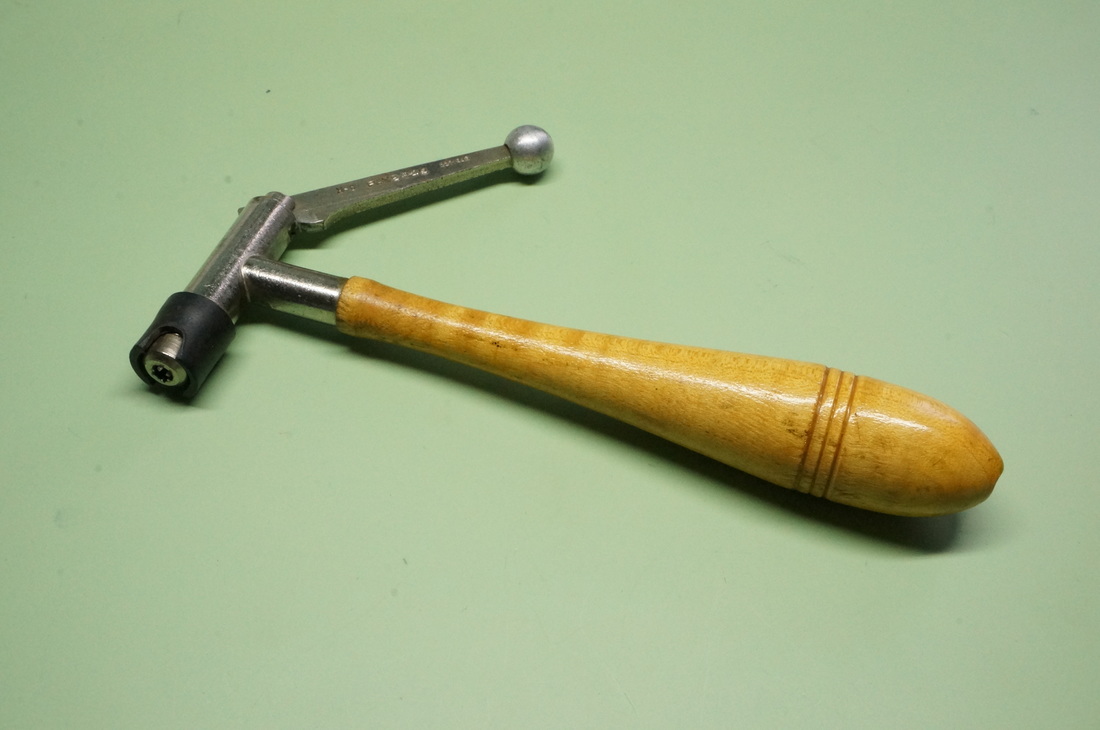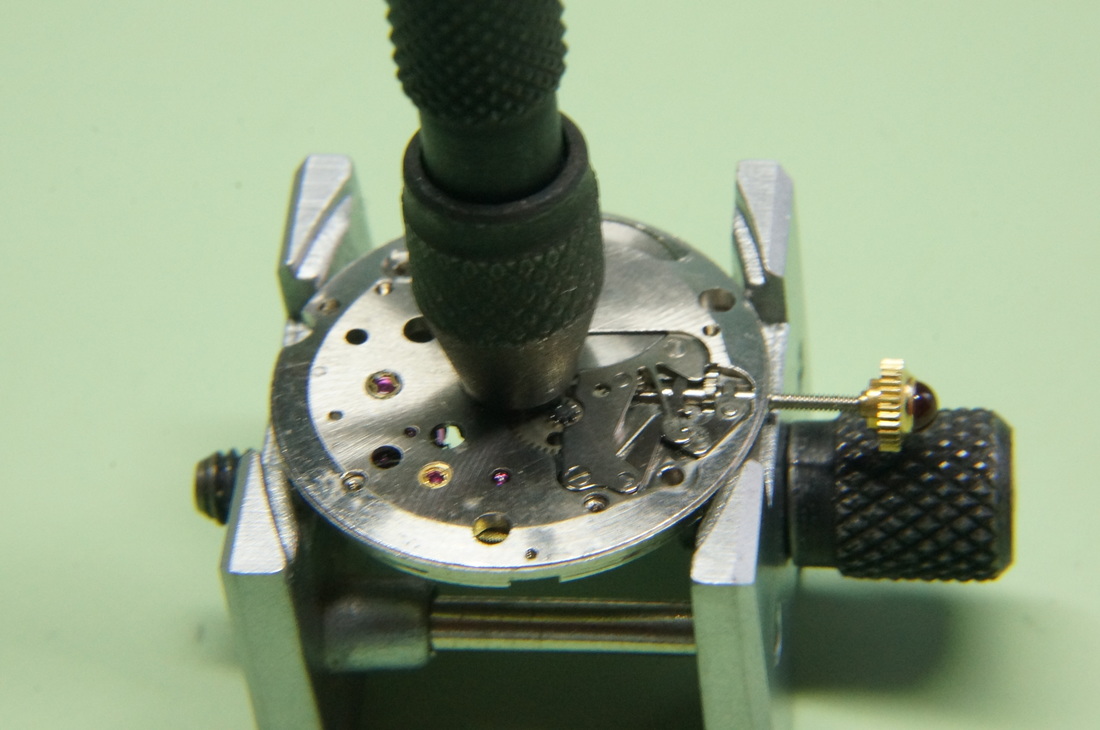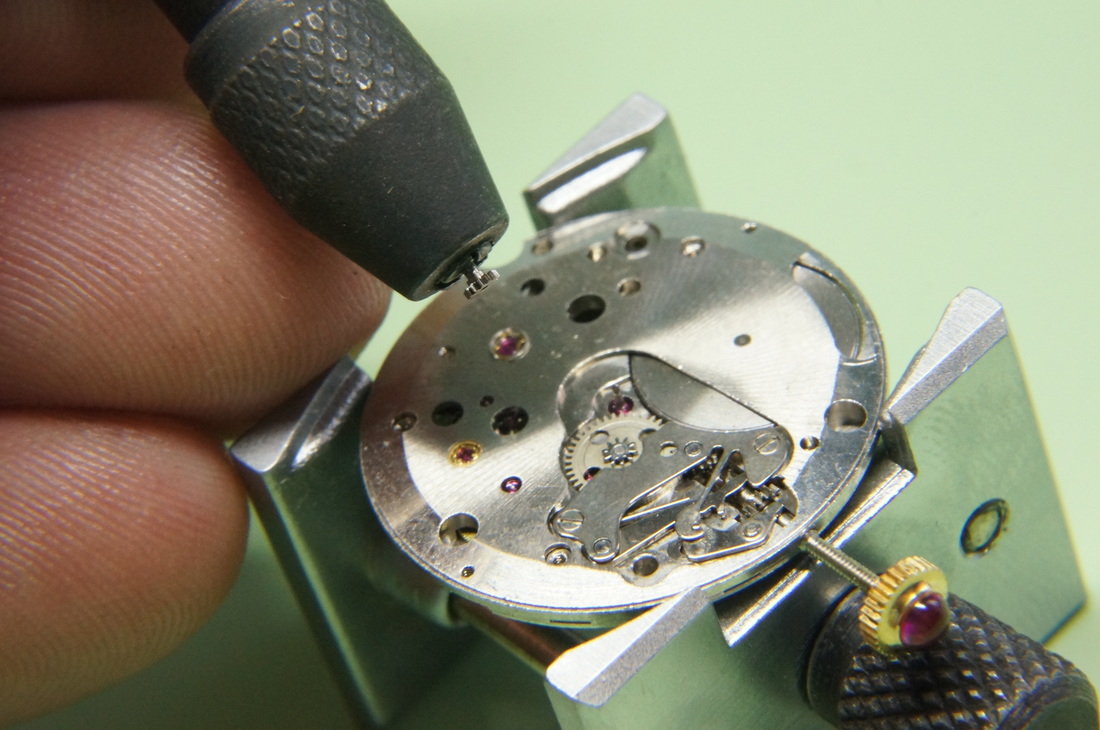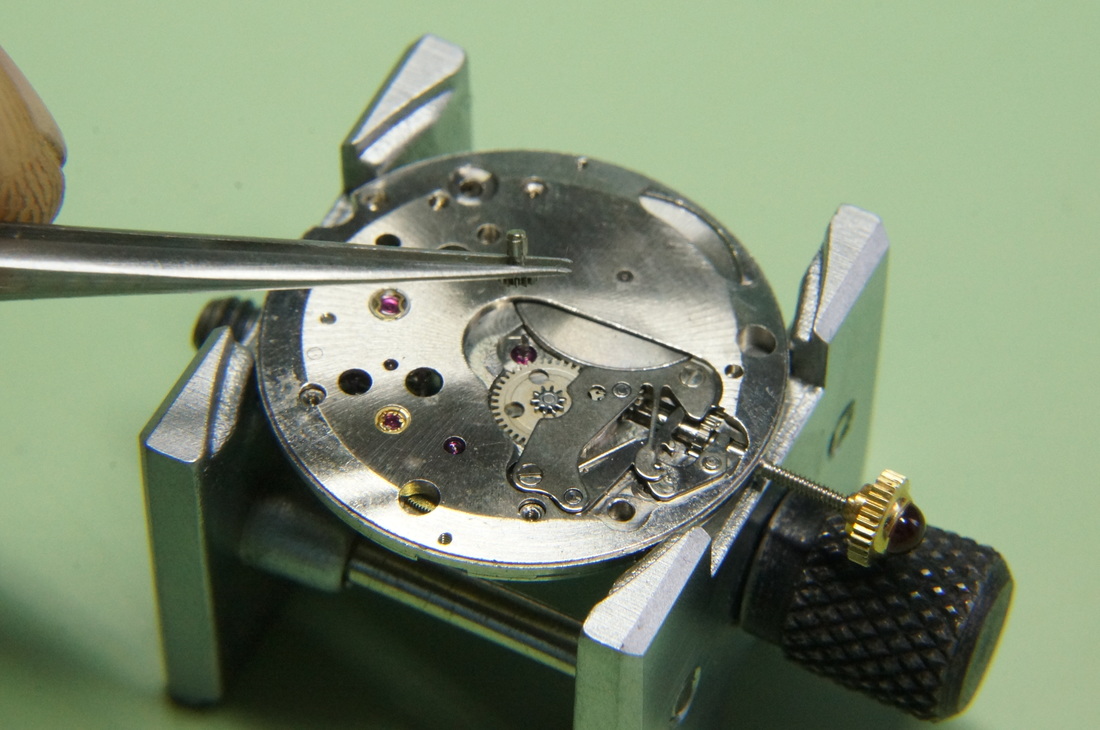Canon Pinion Removal Methods & Tools
The removal of the canon pinion on most watches and pocket watches is a relatively simple task but one that can be done in many ways. The tools and methods suggested here are not without risk but if carried out with due care and diligence they may be used to successfully remove the canon pinion of a watch/pocket watch movement. The safest method ( shown first ) is always the best and correct way of removal, however not every hobbyist/repairer has such tools in possession and may find alternatives useful. As with any tools or method of use, take great care and always use appropriate safety precautions.
|
|
Within the tools end there are a series of six jaws which remain open whilst the lever is up. Once the tool is correctly positioned over the canon pinion, the lever can then be depressed which in turn closes the jaws, and makes a secure grip on the pinion. As the lever is pressed downward, the jaws are pulled into the recess and upward, meanwhile the black plastic surround acts against the main plate as a counter so the pinion can be drawn away. The jaws grip tight enough to grip the pinion but without crushing or damaging the part.
The process is swift, simple, and safe. * Caution * Note the width of the black surround and take care not to place over or on any sub second hand pinions !! |
Pin Vices
Similar in method to how the Bergeon tool works with the exception being that the lifting of the pinion must be done manually by the user and with care not to angle the lift and damage the centre wheel arbour.
There is no need to splash out on expensive sets of Swiss pin vices as almost any small watchmakers pin vices will do the job just fine.
To reduce the marking or damaging of the canon pinion you can close a small round needle file within the pin vice and gently grind the jaws into a more rounded shape. As most pin vices have 3 or 4 jaws and not the nice 6 jaws of the Bergeon tool this method of adapting the pin vice may help reduce damage and further aid the gripping surface of the jaws.
There is no need to splash out on expensive sets of Swiss pin vices as almost any small watchmakers pin vices will do the job just fine.
To reduce the marking or damaging of the canon pinion you can close a small round needle file within the pin vice and gently grind the jaws into a more rounded shape. As most pin vices have 3 or 4 jaws and not the nice 6 jaws of the Bergeon tool this method of adapting the pin vice may help reduce damage and further aid the gripping surface of the jaws.
As can be seen above the canon pinion was gently and evenly removed from the movement ( Corum - Peseux 7001 - For the curious ). When tightening the pin vice make sure not to over tighten and crush the pinion, you are looking for enough force to grip, not enough to obliterate the poor thing !
Tweezer Method
Tweezers have many many uses to the watchmaker and although this method is the least safe way of removing a canon pinion it can be used when no other tools or options are available. Some may frown upon this option but it is an option nonetheless and its only fair to give it a mention.
Having the Bergeon tool in my collection of tools allows me an easy and simple method of removal but i have used the " Tweezer method " many hundreds of times without ever having an issue. If all due care is taken then this method can be effective and safe, but as ever take such a method with caution, there is always a risk of damage/loss.
Having the Bergeon tool in my collection of tools allows me an easy and simple method of removal but i have used the " Tweezer method " many hundreds of times without ever having an issue. If all due care is taken then this method can be effective and safe, but as ever take such a method with caution, there is always a risk of damage/loss.
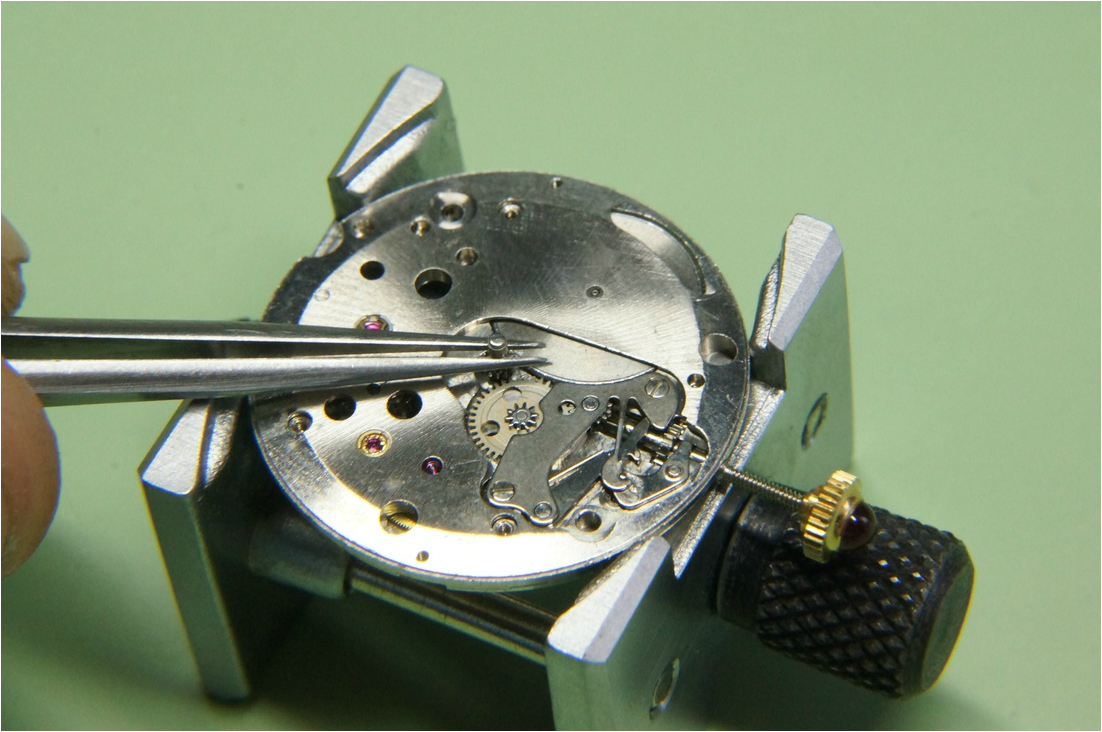
Within the pinion cap and the gear there is a small slot, place and grip firmly with the tip of your tweezers. With the tip of your opposite finger hold the cap of the pinion to steady the lift and gradually lift with pressure until the pinion clicks loose. With practice you will gain a feel for the amount of pressure required to lift the pinion.
As with any of the methods suggested here, take great care and go slowly. I would suggest practicing all methods with scrap movements until you feel confident and sure of your ability to safely remove the canon pinion.
If you enjoyed these tips be sure to check out the other tips in the Tools Guide section.
As an Amazon Associate I earn from qualifying purchases.
If you enjoyed these tips be sure to check out the other tips in the Tools Guide section.
As an Amazon Associate I earn from qualifying purchases.

